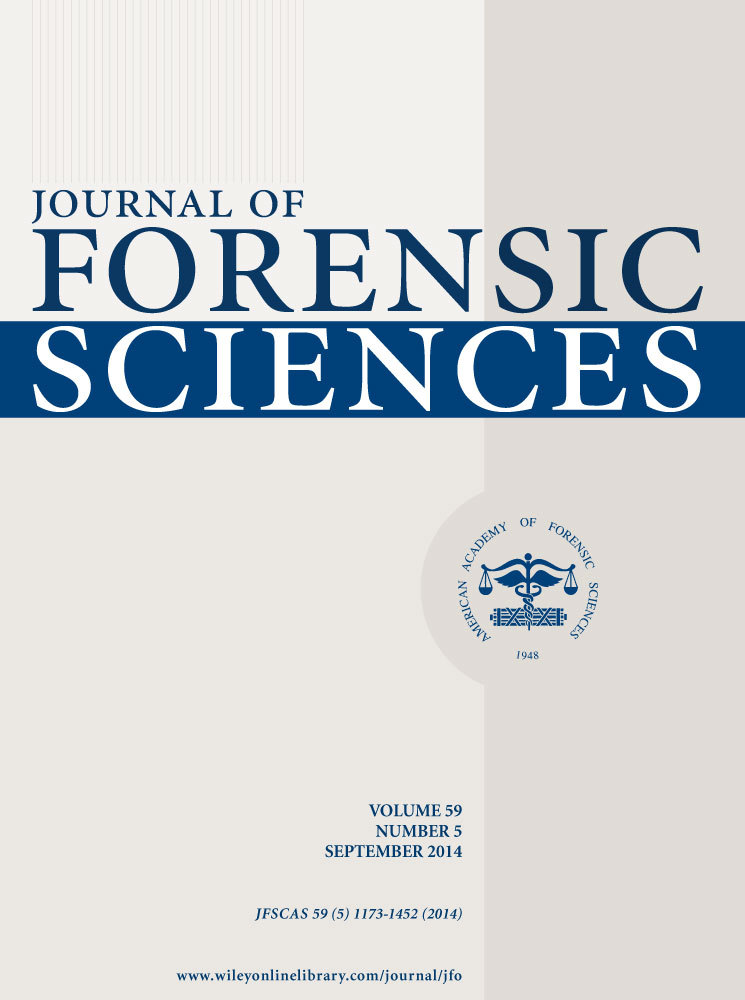The Effect of Light Exposure on the Degradation of Latent Fingerprints on Brass Surfaces: The Use of Silver Electroless Deposition as a Visualization Technique
Abstract
We have studied the degradation of sebaceous fingerprints on brass surfaces using silver electroless deposition (SED) as a visualization technique. We have stored fingerprints on brass squares either (i) in a locked dark cupboard or (ii) in glass-filtered natural daylight for periods of 3 h, 24 h, 1 week, 3 weeks, and 6 weeks. We find that fingerprints on brass surfaces degrade much more rapidly when kept in the light than they do under dark conditions with a much higher proportion of high-quality prints found after 3 or 6 weeks of aging when stored in the dark. This process is more marked than for similar fingerprints on black PVC surfaces. Identifiable prints can be achieved on brass surfaces using both SED and cyanoacrylate fuming (CFM). SED is quick and straightforward to perform. CFM is more time-consuming but is versatile and can be applied to a wider range of metal surfaces than SED, for example brass surfaces which have been coated by a lacquer.




